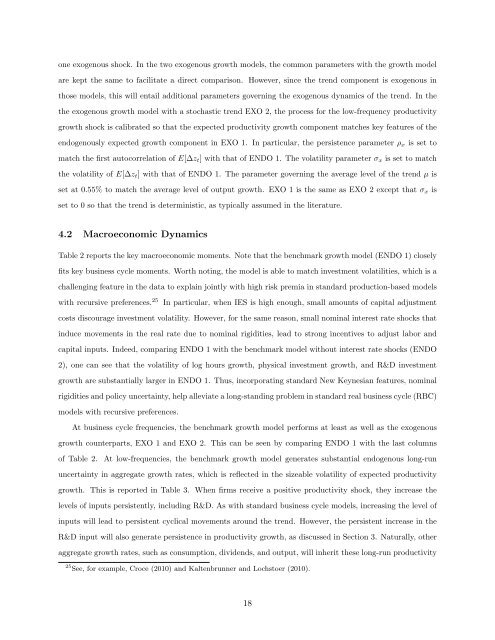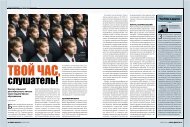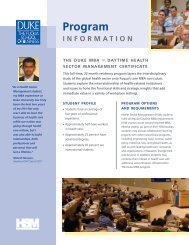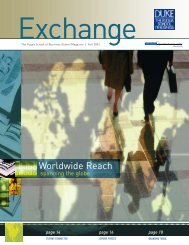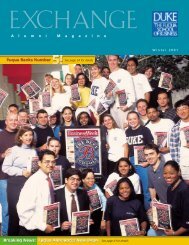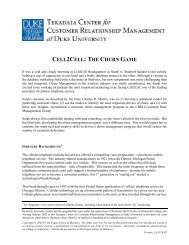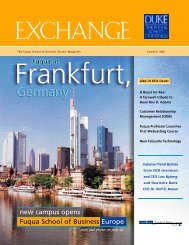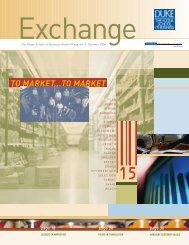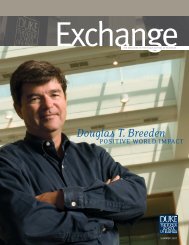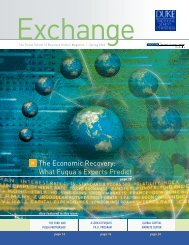Equilibrium Growth, Inflation, and Bond Yields - Duke University's ...
Equilibrium Growth, Inflation, and Bond Yields - Duke University's ...
Equilibrium Growth, Inflation, and Bond Yields - Duke University's ...
You also want an ePaper? Increase the reach of your titles
YUMPU automatically turns print PDFs into web optimized ePapers that Google loves.
one exogenous shock. In the two exogenous growth models, the common parameters with the growth model<br />
are kept the same to facilitate a direct comparison. However, since the trend component is exogenous in<br />
those models, this will entail additional parameters governing the exogenous dynamics of the trend. In the<br />
the exogenous growth model with a stochastic trend EXO 2, the process for the low-frequency productivity<br />
growth shock is calibrated so that the expected productivity growth component matches key features of the<br />
endogenously expected growth component in EXO 1. In particular, the persistence parameter ρx is set to<br />
match the first autocorrelation of E[∆zt] with that of ENDO 1. The volatility parameter σx is set to match<br />
the volatility of E[∆zt] with that of ENDO 1. The parameter governing the average level of the trend µ is<br />
set at 0.55% to match the average level of output growth. EXO 1 is the same as EXO 2 except that σx is<br />
set to 0 so that the trend is deterministic, as typically assumed in the literature.<br />
4.2 Macroeconomic Dynamics<br />
Table 2 reports the key macroeconomic moments. Note that the benchmark growth model (ENDO 1) closely<br />
fits key business cycle moments. Worth noting, the model is able to match investment volatilities, which is a<br />
challenging feature in the data to explain jointly with high risk premia in st<strong>and</strong>ard production-based models<br />
with recursive preferences. 25 In particular, when IES is high enough, small amounts of capital adjustment<br />
costs discourage investment volatility. However, for the same reason, small nominal interest rate shocks that<br />
induce movements in the real rate due to nominal rigidities, lead to strong incentives to adjust labor <strong>and</strong><br />
capital inputs. Indeed, comparing ENDO 1 with the benchmark model without interest rate shocks (ENDO<br />
2), one can see that the volatility of log hours growth, physical investment growth, <strong>and</strong> R&D investment<br />
growth are substantially larger in ENDO 1. Thus, incorporating st<strong>and</strong>ard New Keynesian features, nominal<br />
rigidities <strong>and</strong> policy uncertainty, help alleviate a long-st<strong>and</strong>ing problem in st<strong>and</strong>ard real business cycle (RBC)<br />
models with recursive preferences.<br />
At business cycle frequencies, the benchmark growth model performs at least as well as the exogenous<br />
growth counterparts, EXO 1 <strong>and</strong> EXO 2. This can be seen by comparing ENDO 1 with the last columns<br />
of Table 2. At low-frequencies, the benchmark growth model generates substantial endogenous long-run<br />
uncertainty in aggregate growth rates, which is reflected in the sizeable volatility of expected productivity<br />
growth. This is reported in Table 3. When firms receive a positive productivity shock, they increase the<br />
levels of inputs persistently, including R&D. As with st<strong>and</strong>ard business cycle models, increasing the level of<br />
inputs will lead to persistent cyclical movements around the trend. However, the persistent increase in the<br />
R&D input will also generate persistence in productivity growth, as discussed in Section 3. Naturally, other<br />
aggregate growth rates, such as consumption, dividends, <strong>and</strong> output, will inherit these long-run productivity<br />
25 See, for example, Croce (2010) <strong>and</strong> Kaltenbrunner <strong>and</strong> Lochstoer (2010).<br />
18


